Guide to rationalist interior decorating
Recently someone asked me to write a guide to rationalist interior decorating, since there’s a set of products and best practices (originating with CFAR and Lightcone) that have gotten wide adoption. I’m perhaps not the very most qualified person to write this post, but I’ve been into interior decorating since before the Lightcone team got into it, and I basically know what they do, plus they’re all very busy whereas I wasn’t doing anything else with my time anyway. So here’s this post, which I have written all by myself like a loose cannon; blame me for everything.
I should point out that this post is anthropological, not normative. That is to say, this isn’t a description of what I believe to be ‘optimal’ interior decorating; instead it’s a guide to how to make your space more like what’s come to be standard for rationalist coworking spaces and group houses in Berkeley (and to a lesser extent elsewhere — I’ve seen a Lightcone-style coworking space in New York and lumenators in Oxford!). That said, I do think the reason a lot of the products have gotten adoption is that they’re pretty good!
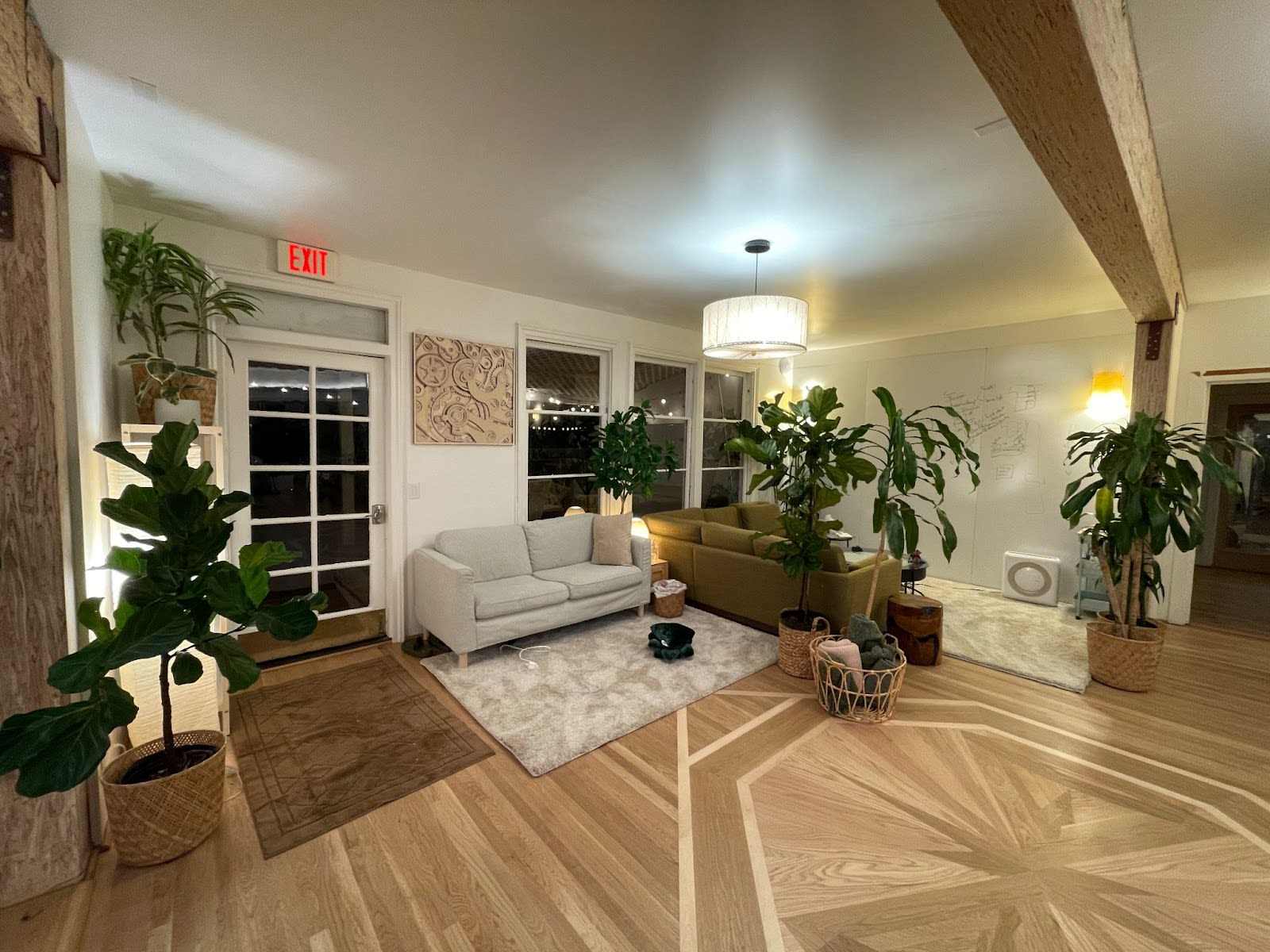
Lighting
Lighting is so important. The wrong light can give you a migraine or make you depressed. The right light can make you marvel in wonder at its beauty (like sunshine through a forest canopy, or incandescent fairy lights). I love lighting. All hail lighting.
Lighting basics
I’m going to cover mostly what you should be looking for when buying (mainly LED) lights, but if you’re interested in the topic of interior lighting more broadly, I recommend this article, which goes into more depth and technical details.
You should always be able to find the CRI, color temperature, and lumens of a product listed on the box or the online product page. I don’t think these should be different in different countries.
CRI (color rendering index)
CRI, or color rendering index, “is the measurement of how light affects how you see color”. You ideally want lights with CRI >95 but this is hard to find; 90+ is a more realistic goal and will be nearly as good, while 80+ is cheaper but noticeably worse.
CRI only applies to buying LEDs — incandescent lights all have a CRI of 100 because they, like the sun, produce light via blackbody radiation.
Color temperature
Color temperature matters a lot when choosing lights! 2700K (‘warm white’) will be noticeably yellow, 5000K (‘daylight’) will be noticeably blue, and 4000K (‘soft white’) is approximately white. The K stands for Kelvin, by analogy to blackbody radiators.
Color temperature is largely a matter of personal preference, but that doesn’t mean it isn’t important. The original lumenators used a mix of 2700K and 5000K bulbs (to imitate sunlight?), but personally I find the bluer bulbs depressing, so I use all 2700K.
Lumens
Lumens are a measure of brightness. As a reference point, the most common type of incandescent bulb (60 Watts) was about 800 lumens. Brighter bulbs draw more power (though this is mostly negligible for LEDs) and are generally more expensive.
Lumens specifically measure how much light something emits; note that the placement of lights and the characteristics of the room will affect how much light you actually receive. I like this article on the difference between lux and lumens (mainly because of the cool graphic).
Diffusion
This one isn’t a technical term, but everyone knows that looking directly at a bright light is painful / unpleasant / maybe bad for your vision. If you’re using really bright lights, you’ll probably want something that diffuses the light without absorbing too much of it. This is the purpose of lampshades, light fixtures, and the paper lanterns used on lumenators.
Bright lighting
Rationalists first got into really bright lighting to cure treatment-resistant Seasonal Affective Disorder, but it turns out that most indoor spaces are just really dark by default, so now we all just use bright lights to make ourselves more awake or happy or whatever.
Lumenators
Lumenators are the origin of the rationalist bright lighting obsession. I won’t re-explain the concept since there are several previous write-ups:
Eliezer (2016)
Raemon (2018)
Alex Altair on alternatives to the traditional lumenator (2021)
Chana on building a lumenator in the UK (2022)
I have built three or four traditional-style lumenators, as described in Eliezer and Raemon’s posts. There’s a significant startup cost — my last one cost $500 for the materials (with $300 of that being the bulbs), and the assembly always takes me several hours and is rife with frustration — but given that they last for years, it’s worth it to me.
Buying high-lumen lightbulbs (US-centric, see here for UK)
The original lumenator used 800-lumen bulbs, and they later upgraded to 1600-lumen bulbs, but that was nearly a decade ago, and LEDs have come a long way since then. Now the standard is basically just ‘as many lumens as you can get’.
I currently use these 2000-lumen A21 bulbs from Cree, which have a CRI >90. I previously used these 2600-lumen A21s from Great Eagle, which are brighter, but the CRI is only 83; I can’t remember how noticeable this was. Cree has made lumenator-suitable bulbs for many years so they’re probably a good brand to check out in general.
As far as I can tell, normal-shaped lightbulbs max out around 3000 lumens. If you want more lumens from a standard (E26) lightbulb socket, try corn bulbs. I have this 95 CRI corn bulb, which is no longer available but was sold by Happyskymall. I can’t vouch for any other brand personally, but scrolling through Amazon I see corn bulbs as high as 21,000 lumens.
Beware, however — with all that power draw, corn bulbs can get pretty hot, and sometimes burn or melt things, including the sockets they’re in.
Dimming
Both A21 lightbulbs I linked are listed as dimmable, but in practice using a dimmer switch with high-powered LEDs often results in annoying buzzing and/or flickering. I basically just don’t recommend using a dimmer switch with a lumenator anymore. When it gets too late for the lumenator, I just transition to lamps and fairy lights.
Non-lumenator light fixtures
I like how the traditional lumenator – a string of 24 lights – wraps around a whole room, providing a roughly equal amount of light from all directions. (Apparently this is pleasant because the light distribution mimics that of the sun shining down from all angles? idk.) But if you don’t want to go to the trouble of building a lumenator, you can also just put really bright bulbs in a normal light fixture or lamp.
What has come to be known in the community as the ‘tofu lamp’ is made by Adesso, and comes in both floor lamp and table lamp styles. The basic appeal of these (yes I know not everyone likes them) is that they can fit many/large bulbs (the floor lamps can easily fit three corn bulbs), and they diffuse & soften the light without dimming it much. But watch out: if you have hot bulbs and your lampshade is hanging crooked, you can burn it!
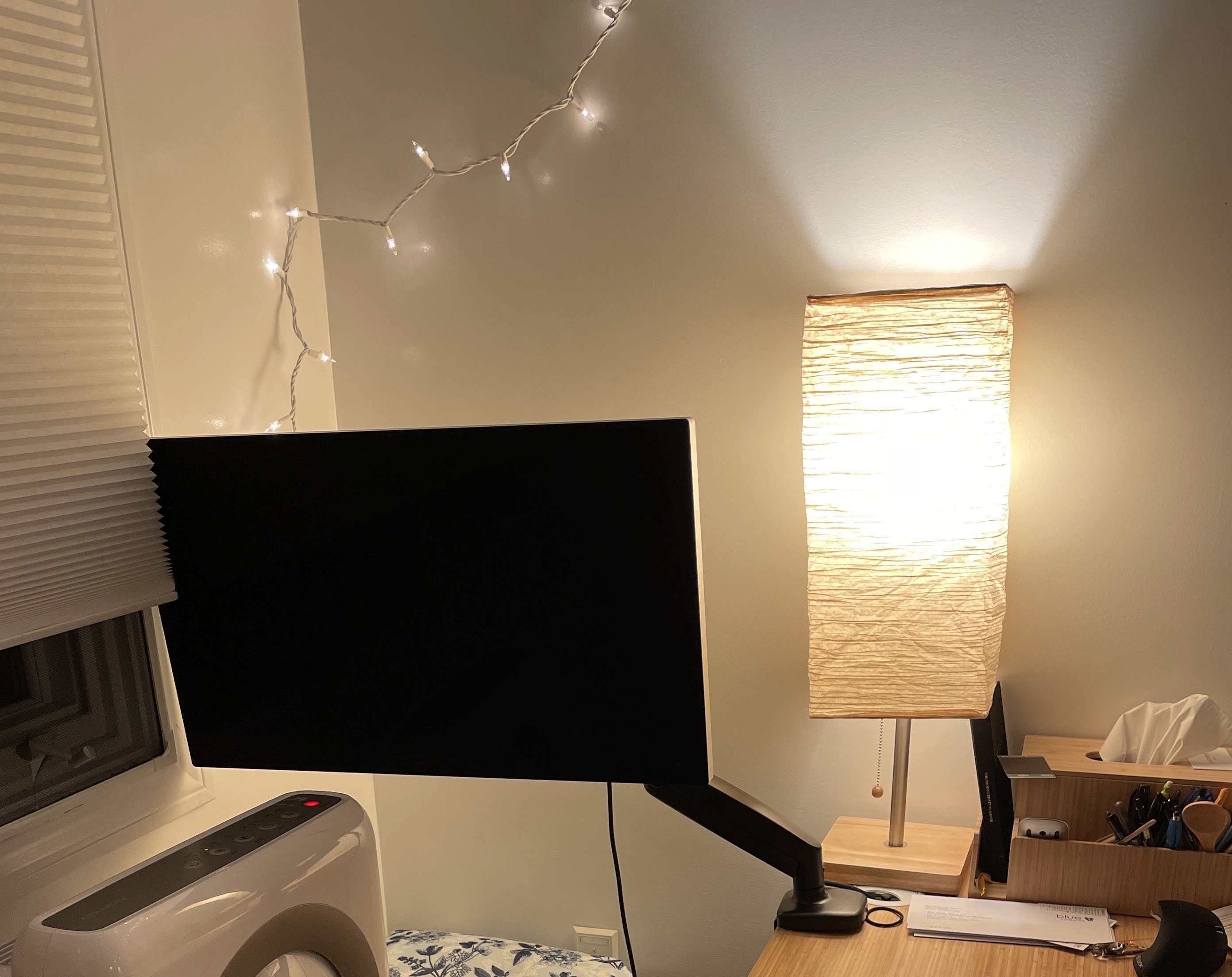
Or, if you want to go really hard: my friend just has a big array of corn bulbs in one corner of his room, diffused by a folding screen, which basically makes that whole corner of his room into one giant lamp. It’s nice because it can be incredibly bright without risking setting a lampshade on fire!
Cozy lighting
Good lighting for winding down and being cozy is very different from good lighting for staying wide awake and working. Cozy lighting should be warm in color temperature, spread out over many small point sources, and ideally of variable brightness, so that you can dim it more the closer you get to sleep.
Let me read you the gospel of incandescent string lights (aka fairy lights / Christmas lights; make sure you get them in ‘warm white’).
They’re so OP. They can instantly make the most boring room beautiful. They don’t give anyone headaches or migraines. When I introduce them to a new space, people say things like “this is so much nicer than before” and “I am happy” and “oh my god why did no one tell me it could be like this” (Andrew Critch, 2022, paraphrased).
In college, my friends wondered how my dorm room felt cozy and homey while their fundamentally identical rooms felt sterile, and the biggest reason was that they were using the overhead lights, while I had fairy lights.
idk man, just get some fairy lights. Watch them twinkle. Experience peace and happiness.
(And if you’re in the US maybe stockpile a ton of them because companies aren’t allowed to produce incandescents anymore?)
Dimming
You can plug any light (that has a plug) into a dimmer switch like this one. They generally work well with incandescents; if you’re trying to dim LEDs, make sure that (a) the LEDs are listed as dimmable, and (b) the dimmer switch is listed as compatible with LEDs. If a lamp is involved probably make sure the lamp is dimmable too.
Decorative lights
These are lights that aren’t used primarily for lighting a space, but are just there to look pretty and add some twinkle. As such, the CRI isn’t nearly as important — even if the decorations cast a non-negligible amount of additional light, they should usually be overpowered by higher-CRI lights as long as they’re less bright.
Copper wire LED lamps
You can make an aesthetic lamp by stuffing copper wire LEDs into something glass — it can be a vase, a glass teapot, an empty alcohol bottle (Bombay Sapphire gin has a particularly pretty bottle), or even just a mason jar (as pictured below).
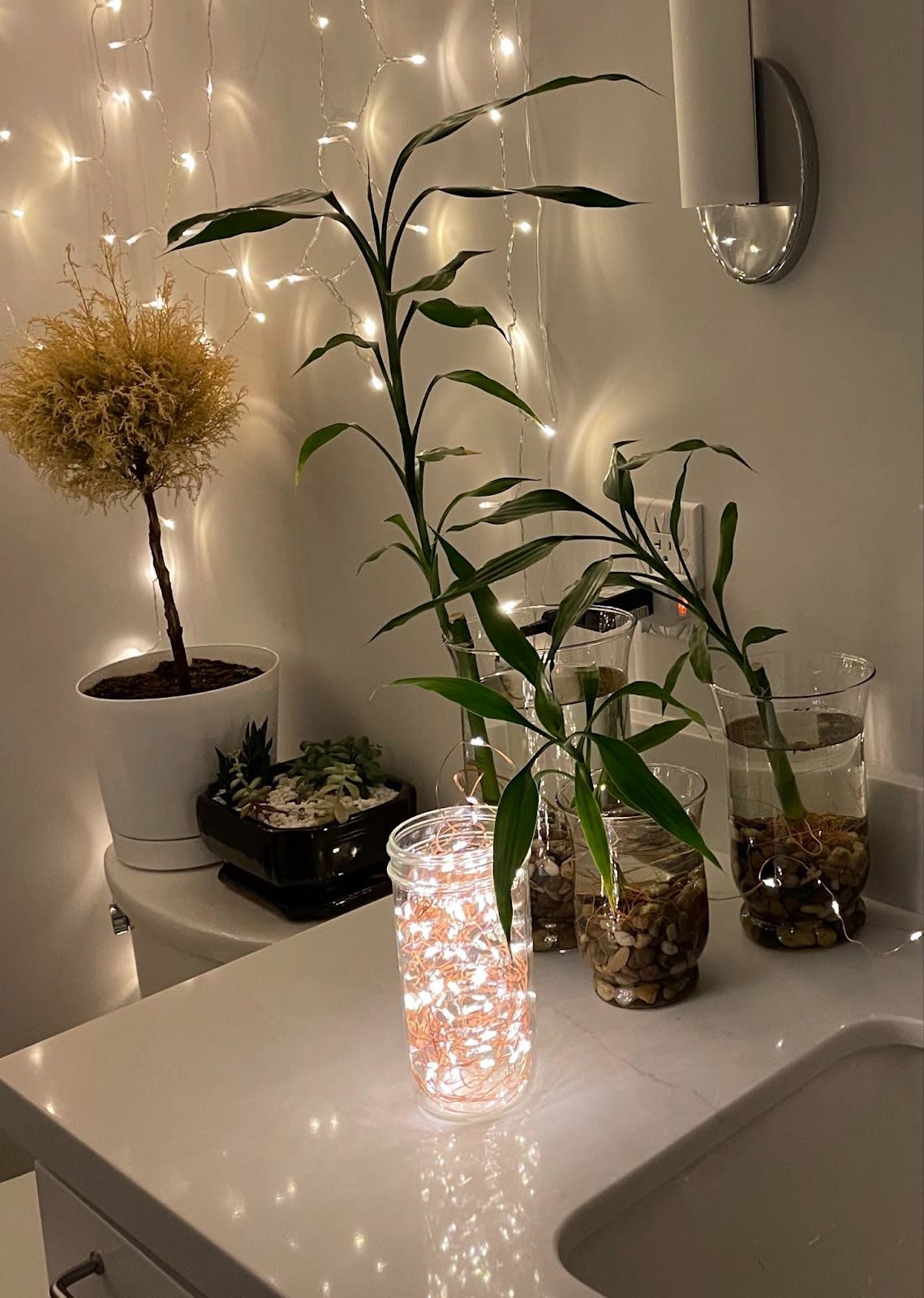
You can also use copper wire LEDs in other ways, for example, to fill a non-functional fireplace! They are pretty.

LED string lights
While LED string lights are too low-CRI to light a space pleasantly on their own (imo), they can be really nice as decoration. The lights behind the tapestry in this picture are an LED light curtain.
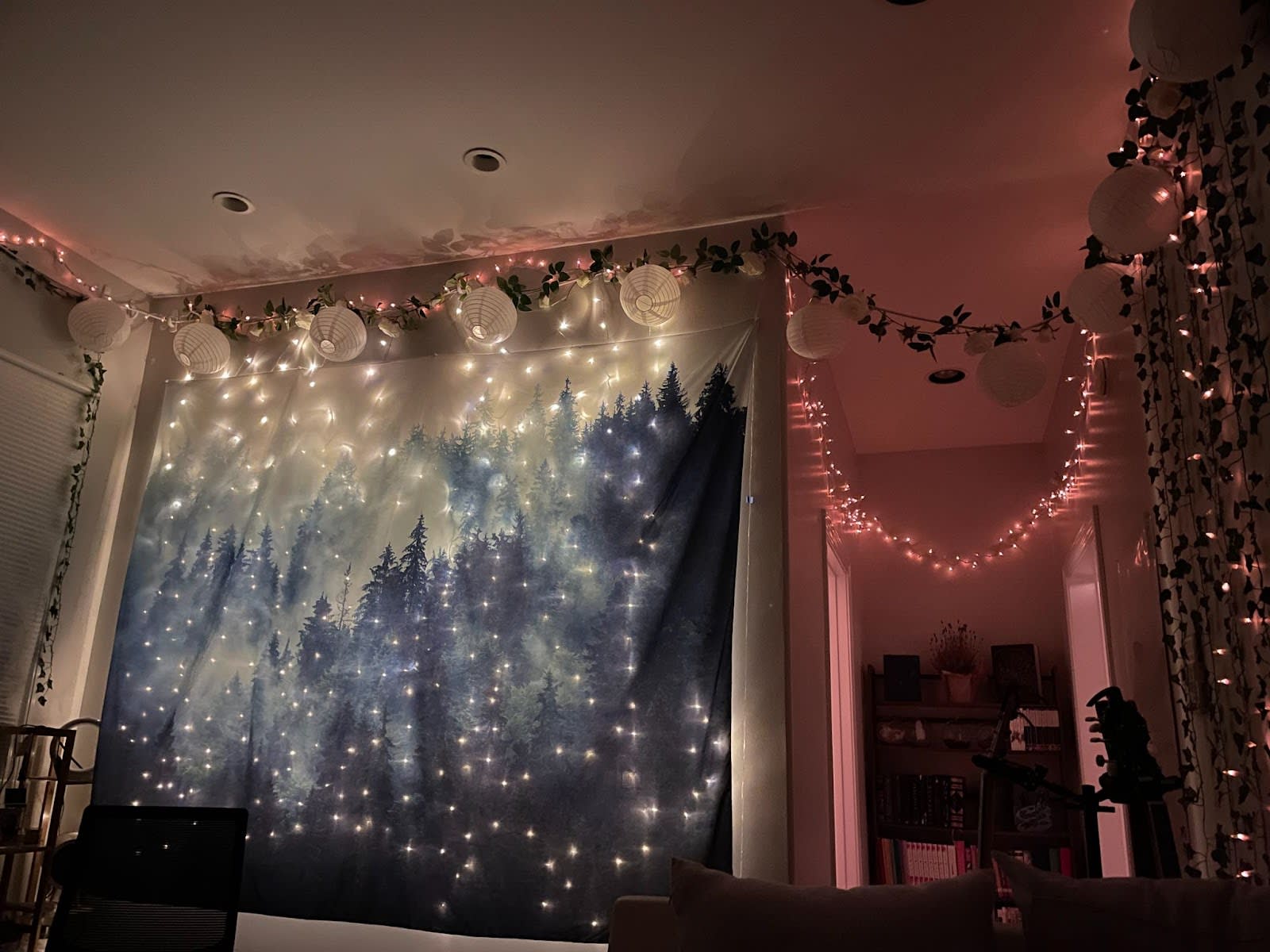
Colored incandescent string lights
Like normal string lights, but with colored bulbs. They’re not great for casting much light, but they’re pretty! Warm white string lights can also be used to enhance the aesthetic of a room, e.g. you can have them on during the day while your lumenator is also on.
Furnishings
Rugs
The rug
The famous rationalist rug is the Home Depot Ethereal shag rug in cream beige. It comes in seven different sizes, and there are also four other color options if you want to be original.
Why is this rug so good? Well, it’s really soft. It makes the floor an appealing place to be. Sometimes I fall asleep on it and don’t even regret it afterwards. Also it can fulfill the need to fidget because it’s fun to bury your fingers in it and make handprints and patterns.
Like any high-pile rug, it will stay nice if you vacuum it regularly, don’t wear shoes on it, and ideally keep it out of high-foot-traffic areas. And like any high-pile rug, if you don’t do these things, it will become full of dirt and allergens and not be nice to lie on anymore.
Slippery rugs
Some people really like these polyester rugs, also from Home Depot — they’re incredibly soft to the touch, and if you wear socks on them they’re super slippy, which can be fun I guess?
Rug pads
A rug pad serves the dual purpose of preventing the rug from sliding around on the floor, and making it squishier to step/sit/lie on. If you’re using a rug on a hardwood or tile floor and you want people to be able to sit on it for an extended period, you should get a rug pad. An alternative that doesn’t solve the slipperiness problem but does create cushion (and may be cheaper) is puzzle mats.
Seating
Floor chairs (’backjacks’)
We still call them ‘backjacks’ because BackJack was the original brand of floor chair that CFAR used, but the product you’ll see around rationalist spaces now is this folding floor chair from Birdrock Home. Some people also like this larger, swiveling floor chair, also from Birdrock Home, though this product is more suitable for permanent seating than flex seating, due to its size and weight.
I’ve heard a lot of people say that floor chairs are stupid and pointless, so let me explain the point. CFAR was the originator of rationalist floor chair use, and the reason they made such heavy use of them was that CFAR workshops involved a lot of people moving between a lot of rooms, and it wouldn’t have made sense (or been possible) to have sufficient permanent seating in every room to accommodate all the people who might ever need to sit there. This continues to apply to other retreats and workshops, but for a home or office, you might well have no need for floor chairs.
TL;DR: Floor chairs give you a lot of flexibility on how you use space. Not everyone needs this flexibility, and so not everyone needs floor chairs.
Couches
There is no one good couch. Whether or not you in particular like a given couch depends on a whole host of factors, including your weight, the length of your thighs, how you want to use the couch (working? cuddling? sleeping?), what materials you like against your skin, what position you usually sit in, etc. In my time in a group house we had at least nine different couches, and every couch had some people who loved it and some who hated it.
That said, the Ceni Sofa from Article (which you may have seen at Lightcone spaces) is pretty widely liked. It’s $1000, but couches are just pretty expensive in general; this isn’t much more than you’d spend at Ikea.
Anyway, the important thing is that your couch be comfortable for you / fit for your purposes. If at all possible, you should try sitting on a couch before deciding whether to buy it. And if buying secondhand (e.g. on Craigslist), don’t commit to the purchase until you’ve smelled the couch.
Papasan chairs
Papasan chairs are another polarizing furniture item. I hate them. They take up so much space but can generally only fit one person, and they require a stupid amount of maintenance. However, some people love sitting in a bowl, I guess.
Air purifiers
I first got into air purifiers because of wildfire season, and then everyone got into them during Covid. They can filter not only smoke and viruses, but also allergens like dust, pollen, and animal dander.
There are basically two air purifiers that everyone I know has, both of which are also on the Wirecutter list of recommended air purifiers. These are the Coway Airmega AP-1512HH and the Blueair Blue Pure 211+ (or 211 Auto). This isn’t a post about air purifiers but here are some considerations about the two:
Coway
Easier to move around (has a handle)
Slim profile, doesn’t take up much space
Lots of self-explanatory buttons
For the love of fuck take the plastic covers off of the filters before running it
Blue
Hard to move around (often falls in half)
Comes in multiple sizes & styles (see e.g. medium size), and the biggest one moves a lot more air than the Coway, which is useful for a big space
Nicer aesthetic (imo), and you can change the look by changing the pre-filter if you want
Aesthetics
You may notice that the aesthetic I outline below is pretty close to what might be called ‘minimalism’, and you might be like “boo I hate minimalism, why does everyone want everything to be boring and beige!” But there are reasons why this is a good basic aesthetic to recommend:
Simplicity – A major reason to recommend minimalism is that it’s simple, and therefore relatively hard to mess up. I’m personally a big fan of well-executed maximalism, with lots of loud colors and patterns everywhere, but I wouldn’t know how to explain how to pull that off.
Visual clutter = mental clutter – Rationalist spaces are often used for working, so you don’t want to fill them with things that will be too visually distracting.
Customizable – If I give you a really basic template, you can follow it and still make it your own.
Okay, so now for how to do it:
Pick a color scheme
In order to have a cohesive aesthetic, you want to pick out one or two each of: base colors, wood tones, and accent colors. Take this Lightcone-designed room, for example:

This room’s base colors are white and cream (walls, ceiling, rugs, air purifier, sofa on the left, whiteboards, lights). It sticks to light wood with yellowish undertones (floor, beams, artwork, wicker baskets). And its accents are brown (leftmost rug, end table, metal screwed into the beams) and green (sofa on the right, plants, some blankets, pillow on the floor).
It’s good for your base to be light, because otherwise the room is going to absorb all that light you just went to the trouble of optimizing. White and off-whites are solid options, but if that’s too boring for you, you can also go for a light color (light blue is relatively common).
Many rooms already have a wood tone in the form of flooring, or a major furniture piece like a desk or dining table. You don’t have to match this exactly, of course, but you don’t want to clash with it – a simple way to think of wood tones is [light vs medium vs dark] and [reddish vs yellowish vs greyish] (I just made this up but it seems right).
Then there’s your choice of color accents. You want these to not clash with your base and wood tones, but otherwise, go with whatever appeals to you.
Color
Color accents are technically optional (unlike a base color, since if nothing else you have walls), but you will probably intrinsically enjoy some amount of color, especially if you have a lot of stark blank space.
I always felt sad in my combined kitchen / living room, until I realized that I could add color to the desolate white cabinets using peel-and-stick wallpaper! And then forever afterward I felt happy instead of desolate when I looked over into the kitchen.
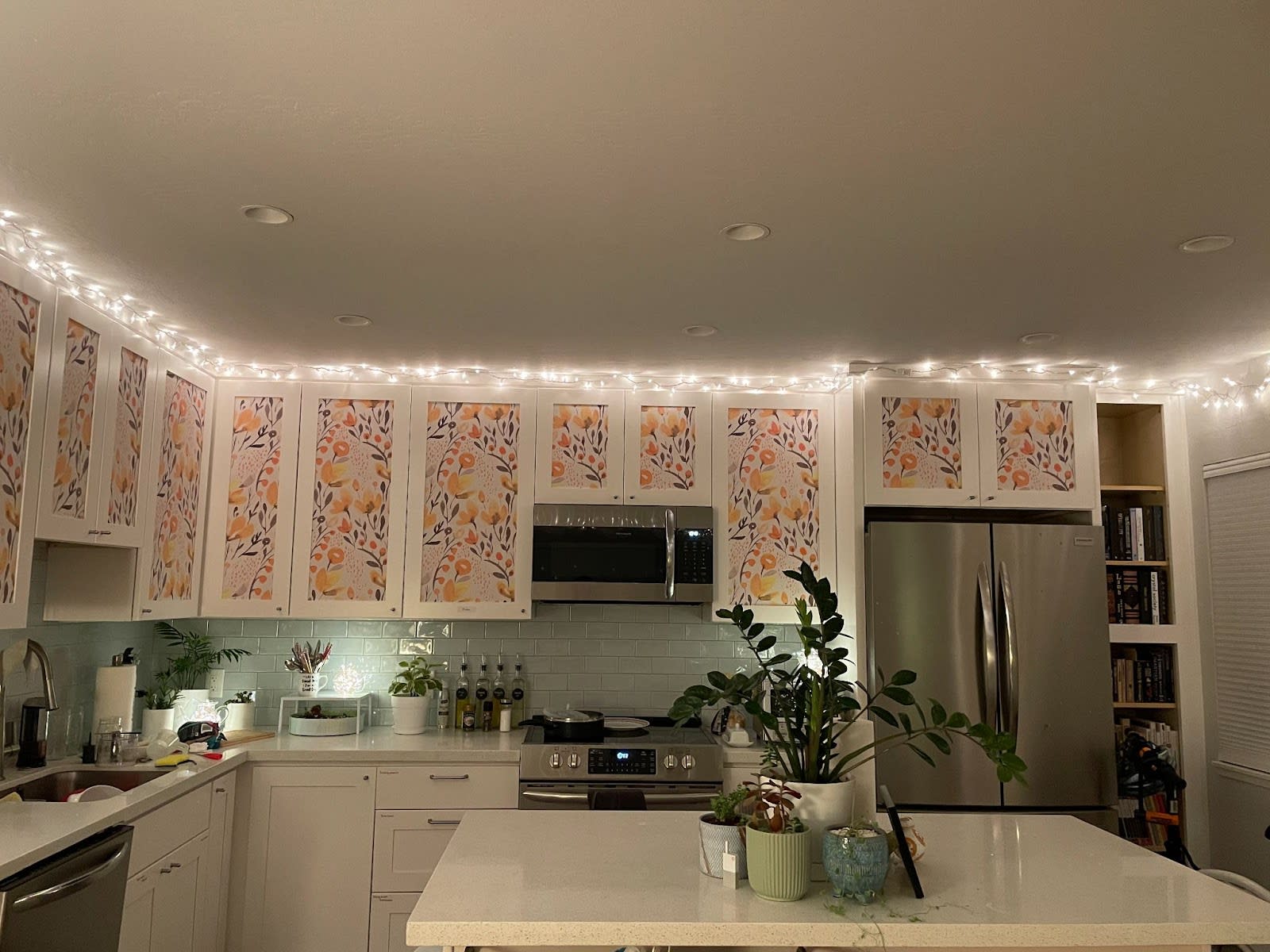
If you have a lot of blank wall space, tapestries are a relatively cheap way to cover a large area. I often recommend this for group houses, and in general I think it’s more a house thing than an office thing.
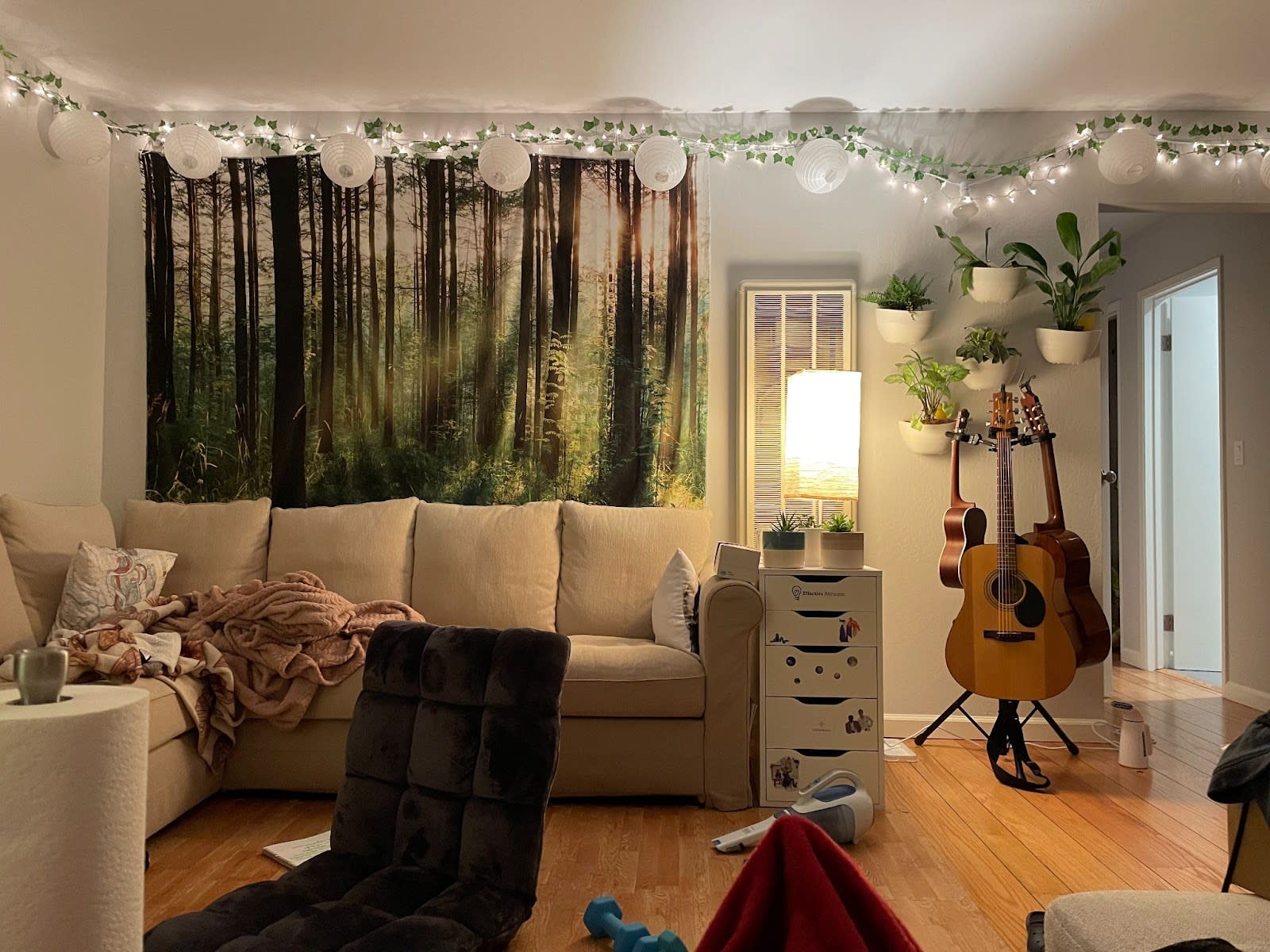
Plants
Aesthetic tastes are of course pretty subjective, but probably the closest you’ll get to a universal is that humans like looking at nature. So, incorporating plants into the aesthetic of your space is a pretty safe bet.
All else equal, it’s nicer to look at real plants than fake ones. But all else is not equal! Not everyone has the time or skill (or the money to hire someone) to take good care of real plants! So while fake plants may be worse to look at than healthy real plants, they’re still better than dead plants or no plants at all.
Another point in favor of fake plants is that you can do things with them that would be hard with real plants. For example, it’s pretty hard to cover a wall with a trailing plant, but pretty easy to hang a bunch of fake ivy. Or like, we wrapped our wedding arch with fake rose vines, and I have no idea how one would even begin to do that with real plants. Also, bonus, if you have a bird or a cat or whatever, you don’t have to worry about them being poisoned by your houseplants.
Ikea sells a variety of fake plants, many of which are pretty good. I’m not well-versed in fake plants so I mostly can’t recommend particulars, but I know people like their fake succulents.
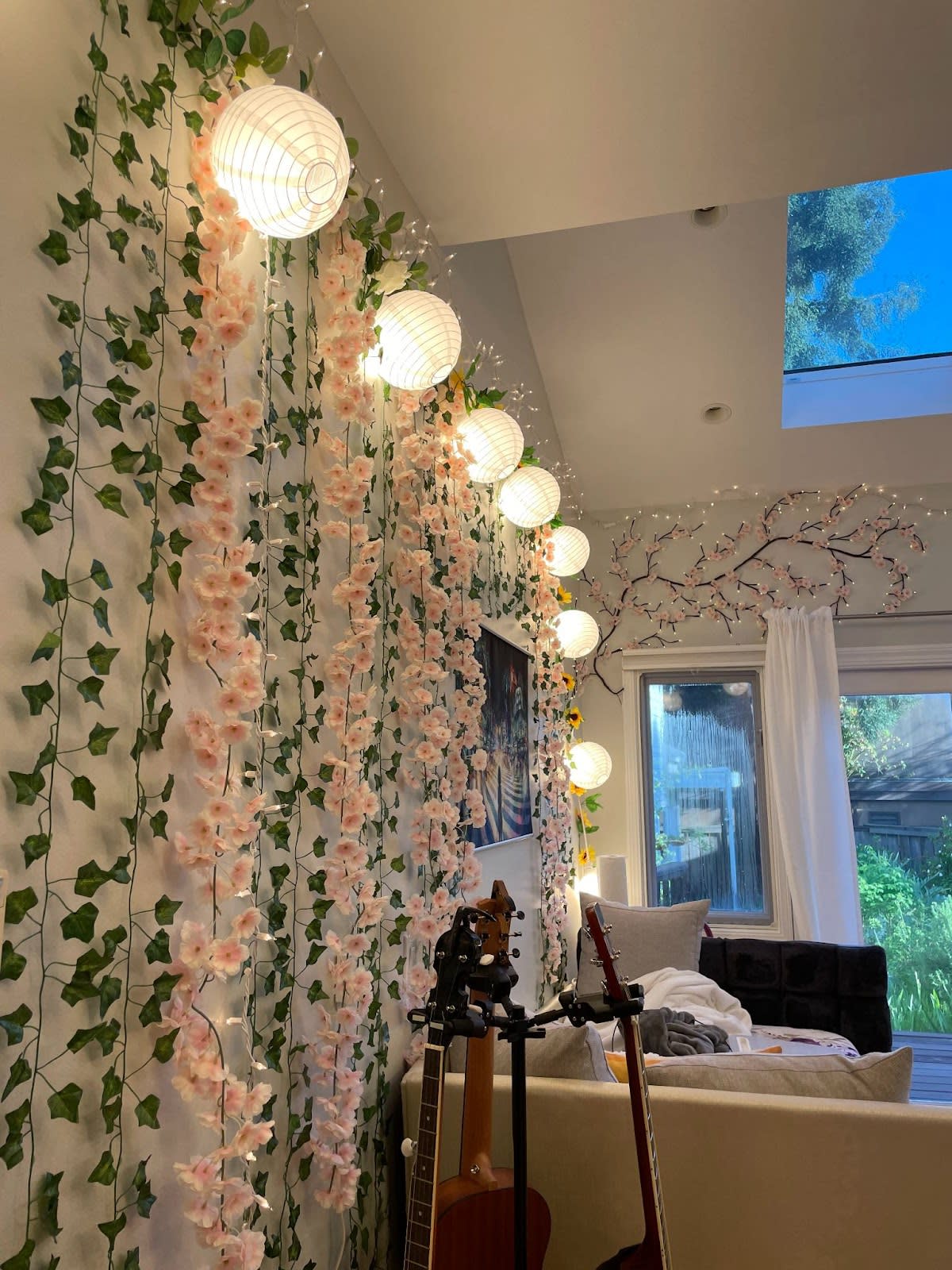
Sometimes people also say that you should have plants because they filter CO2, but this isn’t actually a strong argument in favor of plants – I know some of my friends looked into this five years ago and my vague recollection is that you’d need like 100 plants per person or something to have a noticeable effect.
So there you have it. Now all the secrets have been shared with you. Go forth (or stay where you are) and decorate your living and working spaces.
- Things You’re Allowed to Do: University Edition by (6 Feb 2024 0:36 UTC; 103 points)
- Voting Results for the 2023 Review by (6 Feb 2025 8:00 UTC; 86 points)
- Handing People Puzzles by (18 Aug 2025 6:27 UTC; 28 points)
- Lighthaven Sequences Reading Group #55 (Tuesday 10/28) by (27 Oct 2025 20:55 UTC; 8 points)
- 's comment on Escaping the Jungles of Norwood: A Rationalist’s Guide to Male Pattern Baldness by (21 Jun 2025 22:46 UTC; 6 points)
- Brutalist Prose by (7 Nov 2025 0:59 UTC; 6 points)
- 's comment on Why and how you should make your home smart (it’s cheap and secure!) by (13 Nov 2025 18:21 UTC; 1 point)
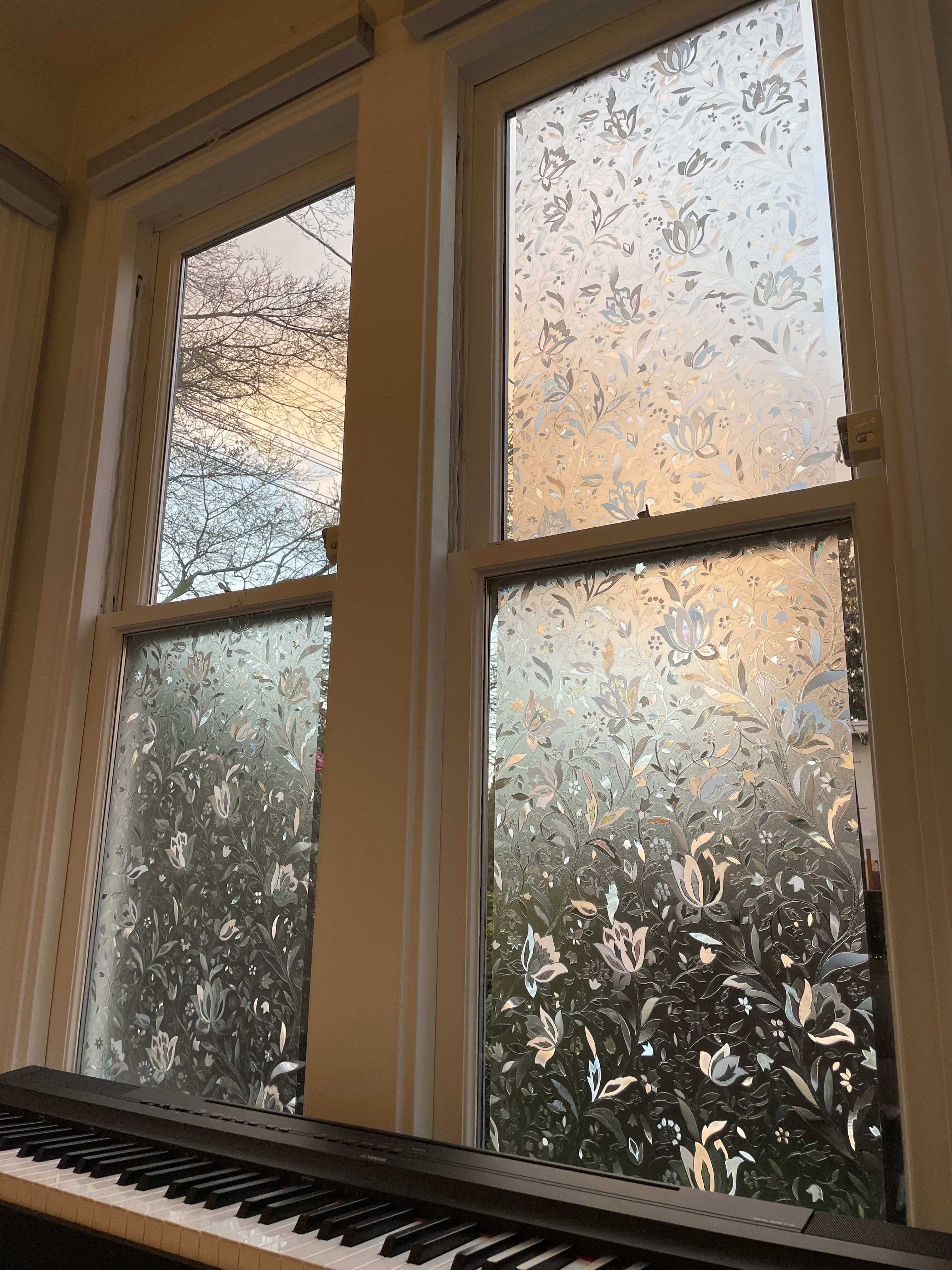
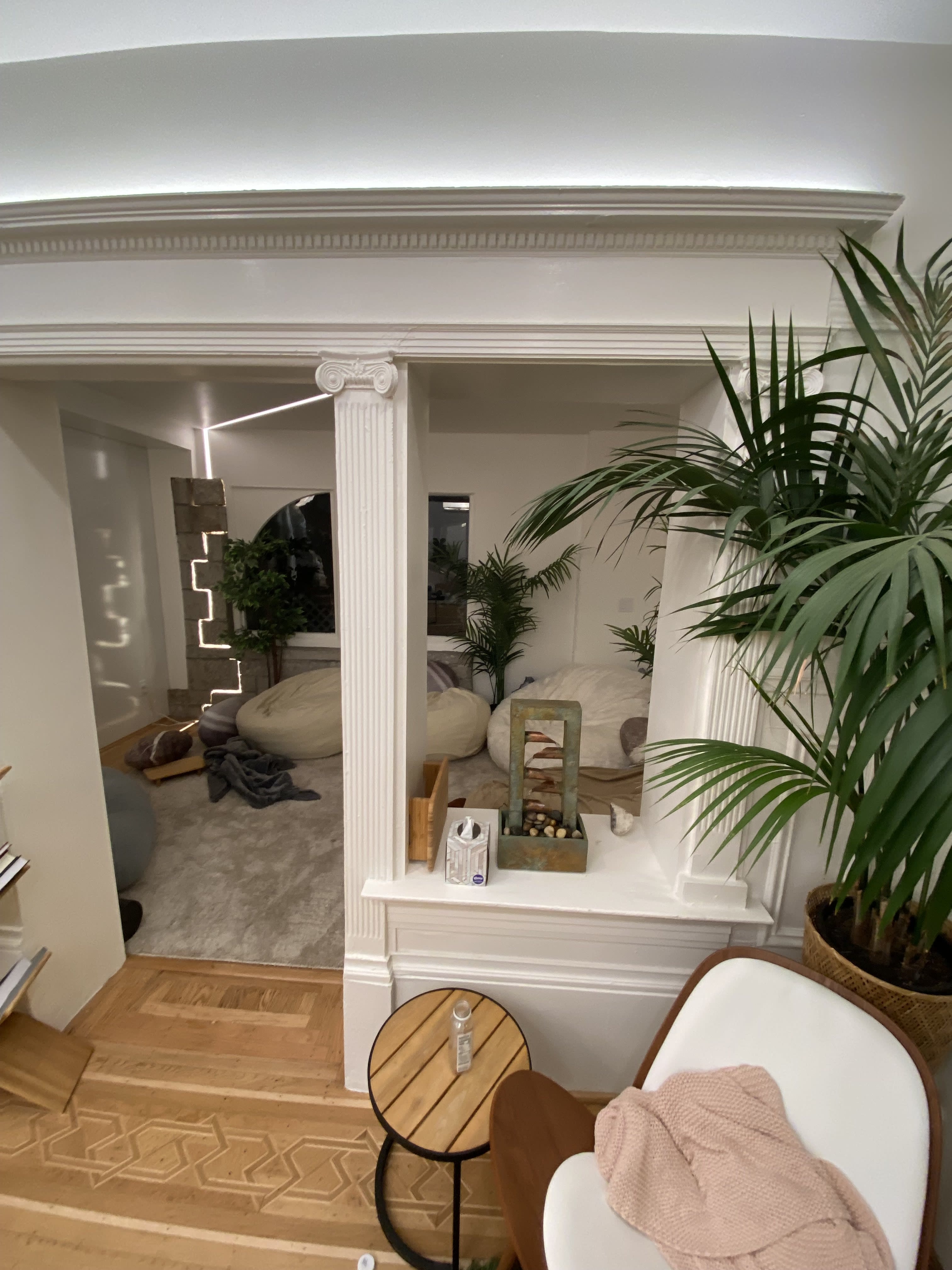
I really enjoy this post, for two reasons: as a slice out of the overall aesthetic of the Bay Area Rationalist; and, as an honest-to-goodness reference for a number of things related to good interior decorating.
I’d enjoy seeing other slices of anthropology on the Rationalist scene, e.g. about common verbal tics (“this seems true” vs “that seems true,” or “that’s right,” or “it wouldn’t be crazy”), or about some element of history.
My recommendation for this essay’s inclusion in the Best Of LessWrong collection comes down to two questions.
Are the places decorated like this actually that nice?
Is this a useful guide for creating those spaces?
Having been to Lighthaven (Lightcone’s venue) a lot over the last year, I think the answer to 1. is a straightforward yes. Lots of other people love Lighthaven. It’s possible that this style doesn’t work if you’re putting less oomph into it than Lightcone put into Lighthaven. I’ve visited a couple of homes decorated like this and think the style works pretty well.
As for 2, yeah, I think this is useful. It points out things people might not think of (colour! I didn’t think about colour when decorating a space, because I hadn’t sat down and thought about it or done much research. Light! Luminators are great and pointing people at them is helpful) and is organized neatly by sections.
I love the interior decorating advice, it’s quite different from the other posts but is really useful when designing and buying for a new room.
Good reference for decorating in an intentional manner, I really like these kinds of posts discussing various aspects we tend to just do automatically, and bring a “smarter” way to approach them. It made me reconsider the importance of lighting in my room and helped me realize that “oh, yeah, that’s actually important, and this is actually a good idea! I’ll do that.” I hope we can start seeing more posts like this.